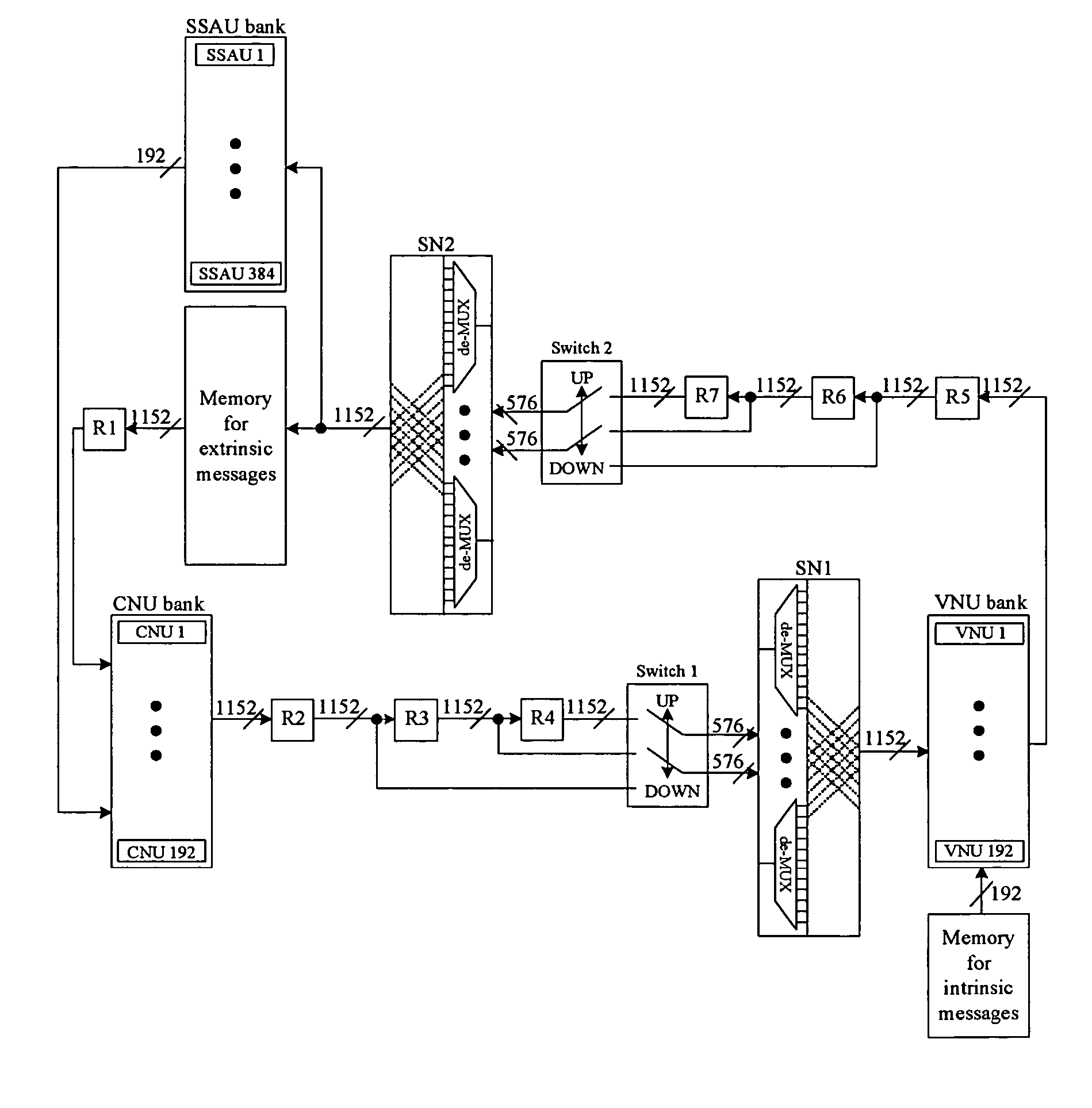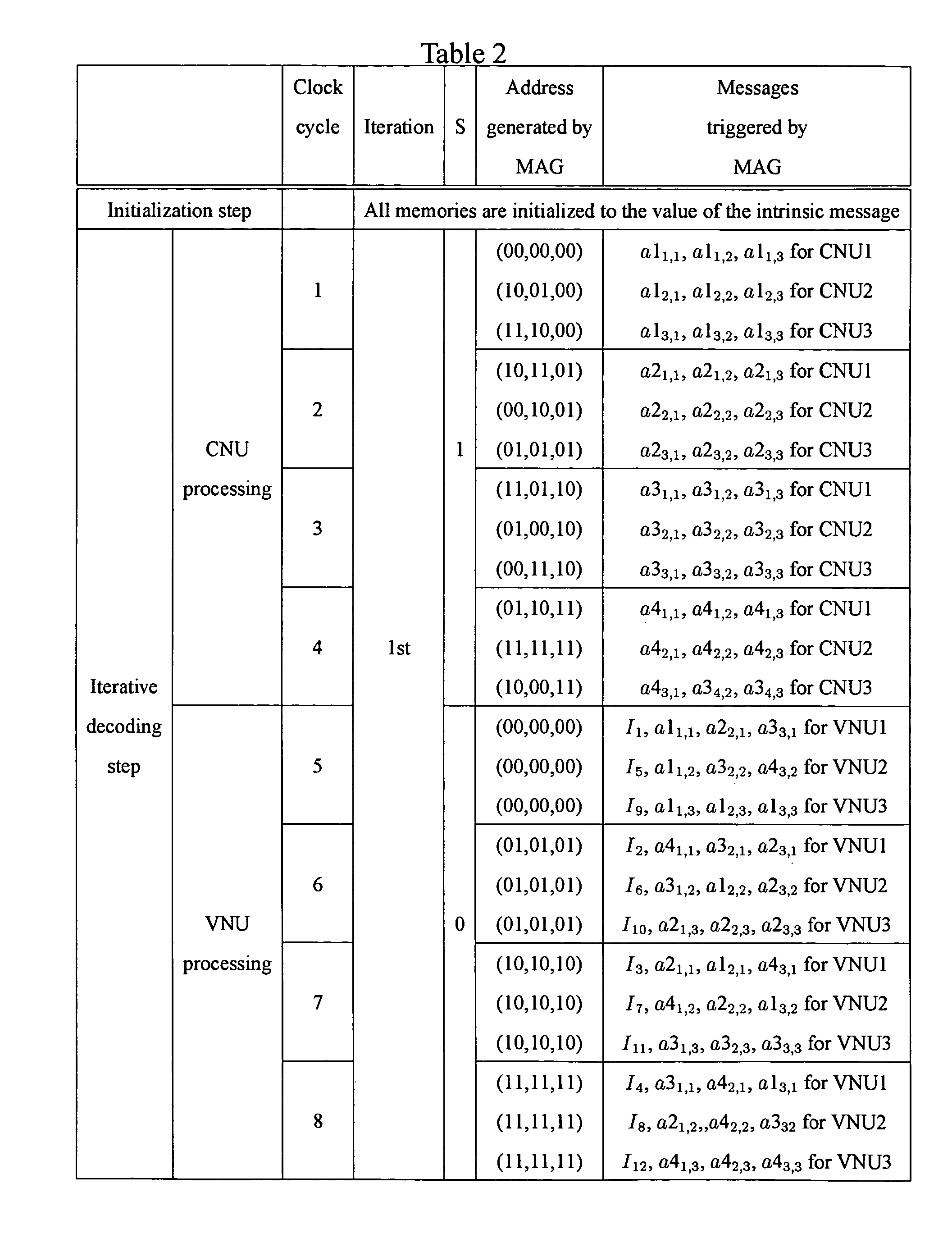System and method for designing RS-based LDPC code decoder
a decoder and code technology, applied in the field of data processing and transmission, can solve the problems of large number of required processing units, difficult implementation of rs-based ldpc decoder based on tm decoder architecture, etc., and achieve the effect of high decoding throughput and low cos
- Summary
- Abstract
- Description
- Claims
- Application Information
AI Technical Summary
Benefits of technology
Problems solved by technology
Method used
Image
Examples
Embodiment Construction
Background on RS-Based LDPC codes
[0037]The RS-based LDPC codes are derived from shortened RS codes with two information symbols. Consider RS codes with symbols from the Galois field GF(pm) where p is a prime number and m is a positive integer. Let q=pm and α be a primitive element in GF(q). The generator polynomial of a primitive RS code of length q−1 and minimum distance ρ−1, where 2≦ρ
[0038]g(X)=(X+α)(X+α2)⋯(X+αρ-2),=g0+g1X+g2X2+⋯+gρ-3Xρ-3+Xρ-2,EQ.(1)
where giεGF(q). The code generated by g(X) is the (q−1,q−ρ+1) cyclic RS code C.
[0039]The generator matrix G of C is a (q−ρ+1)×(q−1) matrix. Then a (ρ,2) shortened RS code Cs with two information symbols is obtained by a shortened generator matrix Gs. Gs is the first two rows of G, i.e.,
[0040]Gs=[g0g1g2⋯100g0g1g2⋯1].
Gs generates a codeword c=(c1, c2, . . . , cp) of Cs. Each component cj is one of the pm elements, 0, α0, α1, . . . , αpm−2, of GF(pm) and can be represented by location vector z(cj), where z=(0, ...
PUM
 Login to View More
Login to View More Abstract
Description
Claims
Application Information
 Login to View More
Login to View More - R&D
- Intellectual Property
- Life Sciences
- Materials
- Tech Scout
- Unparalleled Data Quality
- Higher Quality Content
- 60% Fewer Hallucinations
Browse by: Latest US Patents, China's latest patents, Technical Efficacy Thesaurus, Application Domain, Technology Topic, Popular Technical Reports.
© 2025 PatSnap. All rights reserved.Legal|Privacy policy|Modern Slavery Act Transparency Statement|Sitemap|About US| Contact US: help@patsnap.com



